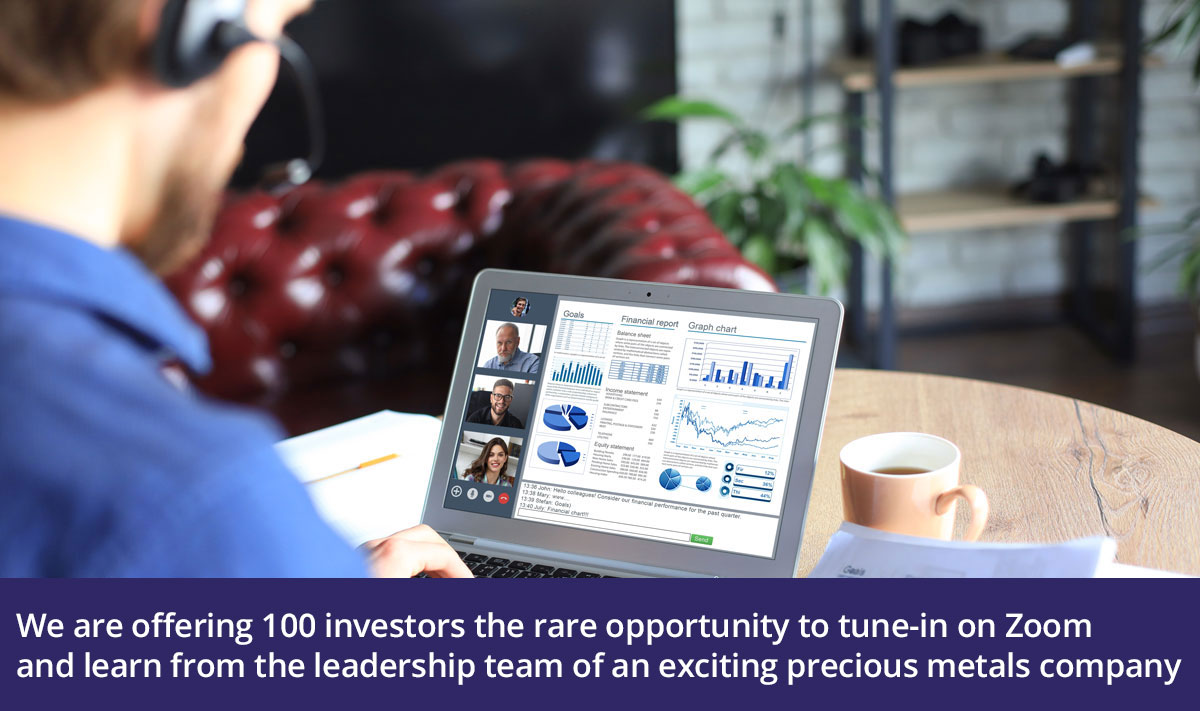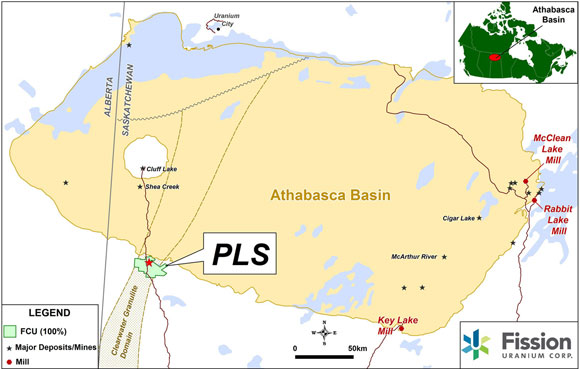TICKERS: AMZ, BP, NRGY, EP, XOM, GLP, HOC, HEP, MMP, NKA, WMB
Gabriel Hammond: New MLP Options
Interview
Source: Brian Sylvester for The Energy Report (7/29/10)
 SteelPath Fund Advisors Founder Gabriel Hammond recently launched three Master Limited Partnership (MLP) mutual funds. They are the first open-ended funds in the MLP space, but will certainly not be the last. Gabriel explains the appeal of the new funds and gives us some of his firm's favorite MLP names in this exclusive interview with The Energy Report.
SteelPath Fund Advisors Founder Gabriel Hammond recently launched three Master Limited Partnership (MLP) mutual funds. They are the first open-ended funds in the MLP space, but will certainly not be the last. Gabriel explains the appeal of the new funds and gives us some of his firm's favorite MLP names in this exclusive interview with The Energy Report.
The Energy Report: You recently launched three MLP mutual funds. When an investor places money in these funds, he or she is basically investing in energy infrastructure. Your firm is the only one to offer open-ended funds such as these. Tell us why you decided to launch them.
Gabriel Hammond: For years, investors have been searching for a liquid, transparent investment product that allows them to gain exposure to energy infrastructure through the MLP asset class. Particularly throughout the volatility in 2008–2009, whether you were a registered investment advisor or an institutional investor such as a pension fund, you probably spent a significant amount of research time working on this asset class in order to better understand it. Out of that effort has come a significant understanding that MLPs should really be part of any diversified asset allocation strategy. In other words, they're a permanent part of someone's portfolio and have tremendous diversification benefits, not to mention their 7% plus yield and their annualized 18% total returns over the last decade.
People want to invest in the MLP asset class, but they haven't been able to find the right product to access them. Investing directly in MLPs demands dealing with K-1 tax forms, and while many investors and institutions do have the systems in place or the accounting help to be able to do that, for most, receiving 20 to 40 K-1s from a diversified portfolio, as well as possibly having to file taxes in 30 to 40 states, is not something that they are prepared to do. Also for tax-exempt accounts, whether they are personal IRAs or multi-billion pensions, unrelated business taxable income (UBTI) considerations are a concern for direct holders.
TER: But you can get exposure through closed-end funds and MLP exchange-traded notes (ETNs).
GH: There are a variety of closed-end MLPs funds and ETNs, but each has drawbacks.
On the closed-end fund side, you have very high ongoing management and administrative fees and substantial underwriting discounts. Throughout their history, those products have consistently failed to outperform the benchmark—investors would have done far better investing on their own in an index.
ETNs require the investor to take on credit exposure to the issuing firm. Many institutional investors are limited as to the amount of credit risk they can take on from any one firm—maybe 2% of any one institution's credit. Let's use JP Morgan credit exposure as an example. An institutional investor may very well want a 5% or 10% allocation to MLPs, but they can't do that completely through J.P. Morgan's exchange-traded note, because they can't take such a significant single credit exposure as part of their mandate. They are a terrific product in many ways, but can't fit all of an institution's needs.
We've been looking to develop a product that allows these different types of investors to access MLPs with liquidity and transparency, using a single 1099 tax form. Another significant benefit of an open-ended fund is that the underlying MLPs trade upwards of $600 million a day. If you're looking at the liquidity of a closed-end fund that trades 150,000 shares a day (only $3 million a day for a $20 stock), it could take an institutional investor three months to exit. Or, they'd have to pay a significant discount if they want to trade a block, say, 5%–7%. In many ways, it's not a true institutional choice.
TER: Is that key for an institutional investor?
GH: Absolutely. Mutual funds are traditionally thought of as a retail product. But this open-ended fund structure allows those investors to take part in a much greater pool of liquidity to access the space. Mutual funds always trade at net asset value. Investors always know that they can enter and exit an mutual fund, which I think is very important to the institutional investor.
TER: Why haven't we seen open-ended MLP funds before?
GH: I think there's been confusion about the structure of a registered investment company versus an entity making a tax election as a regulated investment company (RIC). With the Securities and Exchange Commission, being an open-ended fund means you're an N-1A filer; that is how you register under the 1940 Act, and that is your structure. On the other hand, choosing to be taxed as a RIC is a tax selection made with the IRS. In other words, when your administrative assistant goes to irs.gov to create your Tax ID Number (TIN), there are a number of choices: partnership, limited liability company, corporation and RIC. Most mutual funds, for obvious reasons, have chosen RIC, which unfortunately, along with tax-free benefits, has a 25% limit on investments in MLPs. Obviously, we want to be able to provide pure play exposure, so we have elected to check the corporate box.
People have typically thought of a RIC as a structure. Whether you're an attorney or the CEO of an investment management company, most people seem to have confused the two; they hadn't really thought of a RIC as simply a tax selection, as opposed to a structure. Our fund is a registered investment company under the 1940 Act; we make all the usual filings. There's no difference between us and any other plain vanilla mutual fund.
TER: And your company, SteelPath, has a lengthy history in MLPs.
GH: Our affiliate, which exclusively advises MLP separately managed accounts, has a six-year performance history that substantially outperforms the benchmark index, and whose reporting has been Global Investment Performance Standards (GIPS) verified. In March 2010, our firm, SteelPath, spun out from a company called Alerian MLP Index (NYSE:AMZ). That's the company that created the very first MLP index, the Alerian MLP Index (NYSE:AMZ) and the very first MLP exchange-traded product based on an MLP Index. There's a history of innovation. We spent a lot of time with our attorneys developing this structure. If you called one of our direct MLP competitors before we announced this product and asked, "Why didn't you offer an MLP mutual fund?" they would have said, "Oh, you can't do an MLP mutual fund. Everybody knows that you can't roll more than 25% of MLPs into a RIC." But we were able to put a tremendous amount of time and money into effective research to understand the structure.
TER: Do you think your model will be copied?
GH: Absolutely. We've already had a competitor copy our structure and re-file an N-1A with the SEC. We're less focused on that sort of direct MLP manager competition, however. If these funds are as successful as we think they can be, we fully expect much larger competition—your Fidelities, American Centuries, Putnams. This will probably mark the beginning of a sea change in terms of the institutional ownership of the asset class over the next five years.
TER: What are the key differences between open-ended and closed-ended funds?
GH: The closed-end funds are affectionately known as "roach motels," because you check in, but you never check out. The reason that's such a well-known joke in the wealth management space is that these companies, once they do their offerings, hold on to that capital. You can't say, "Listen, I'd either like my money back or the underlying securities." It's permanent capital. Whether or not you like that investment, or whether or not the management is doing well, your only option is to trade your shares on the secondary market. That could mean trading at very steep discounts to their net asset value.
TER: So why would anybody be in a closed-end fund?
GH: The reasons that closed-end funds exist is that they purportedly offer access to an asset class you can't traditionally have access to. For example, Nuveen Investments Inc. might say, we're going to buy 2,000 different municipal bond issues. That's something that an ordinary investor couldn't do because he just doesn't have the access. Typically, because of the liquidity of what they're investing in, maybe it's a 30-year municipal bond portfolio, the closed-end fund says, "Listen, we really need your capital for the next 30 years."
With the addition of exchange-traded notes, mutual funds—and there's also an ETF filing out there—we think that that logic is going to disappear in the MLP equities space. If SteelPath were to consider launching a closed-end fund in the energy infrastructure sector, it would be very different from the model that our competitors have, both structurally and in terms of its portfolio holdings. We would only do something in the closed-end-fund space if we truly believed the permanence of the capital was warranted by the investment strategy, and we could provide value or access to a segment of the market that investors cannot reach today.
TER: Please tell us about the three different funds and briefly describe each.
GH: The Select 40 Fund provides broad-based exposure to the MLP asset class. No company will be more than a 5% position in that fund. This really is, again, an access product, with an 85 basis point expense ratio.
The Income Fund is unique. It has a monthly dividend, with a 100-plus basis point yield premium to the other two funds. For instance, if the other two funds yield 6.8%, the Income Fund yields 7.8%, paid on a monthly basis. Whether you're an individual who wants to receive the monthly checks, or a pension fund looking to offset its liabilities, we think that's a unique feature of this particular fund. It's really focused on the income side, as opposed to growth.
The third fund is the Alpha Fund, which allows us to take advantage of the inefficiencies of the MLP asset class. This fund has a long-term investment horizon, in terms of seeking those MLP names we believe will have the greatest capital appreciation—whether through revaluation or superior distribution growth. Typically we're going to have less than 20% turnover, but it will be closer to 10% on an annual basis. We're very much private equity investors in terms of how we think about investing in the space.
TER: What are the advantages of being in MLP mutual funds like the ones you're offering, versus being directly vested in MLPs and getting the distributions?
GH: The big difference is the tax form that you will receive. By investing in MLPs directly, as I mentioned, you end up with a K-1 and you will owe state taxes in every state where that company operates. If the MLP owns a pipeline that operates in 20-plus states, you will need to file 20-plus state tax forms. With the mutual fund, you're going to receive a single 1099 for your entire portfolio.
Also, if you're a tax-exempt institution, direct ownership creates UBTI. If you hold MLPs through our funds, you're not subject to UBTI, so that's one reason we think tax-exempts will likely gravitate toward the structure.
TER: And exposure to the rapid growth of GPs?
GH: Our funds can, and do, hold MLP GPs. You can receive that exposure through ownership in the fund.
TER: So you have basically simplified investing in MLPs.
GH: Yes. The result is simplified tax reporting. Essentially, the elimination of any UBTI means you can hold MLPs in an IRA or 401(k) account, pension fund, endowment, or other tax-deferred account. It allows you to replace 20 K-1s with a single form 1099.
TER: And the minimum investment is $3,000?
GH: Yes. We believe that MLPs should be an allocation in every diversified portfolio, and want to ensure that investors of all sizes can allocate to this asset class.
TER: As you mentioned earlier, investment-grade MLPs have had 10 straight years of 18% annualized growth. Do you think the MLP bull run is close to ending, or is there a lot left in the tank?
GH: It's not just the investment grade. It's actually the broader market index, the Alerian MLP Index. The AMZ is similar to the S&P 500; it's market cap weighted, float adjusted. That index has risen 18%, throwing in the kitchen sink of any company that's ever had an initial public offering as an MLP.
Where are we in the return cycle? We're in the bottom of the third inning right now, in terms of where this investment thesis is. You've had very strong returns over the past decade, but you have to look at the factors that have driven those returns and think about the sustainability. The big differentiator there is that MLPs have grown their distributions at nearly 9% a year for the past 10 years, whereas other asset classes like big utilities are under 2%. That is a significant disparity.
The three pieces that have led to that strong performance make up the organic growth profile. First, increasing energy demand means more throughput in these pipelines. Second, you've got investment growth in these companies and regional franchise monopolies. As they continue to grow, so does your return on those investments. Third, there's a tremendous acquisition story here; you're seeing the potential for $10 billion in acquisitions a year.
To give it perspective, more than $200 billion worth of new energy infrastructure needs to be built in the next decade. There's nearly $300 billion worth of existing energy infrastructure in corporate form that can be sold into the MLP structure. When you look at the past decade and the factors that have contributed to that growth, all three legs of the stool are still in place.
TER: But can you realistically expect those kinds of returns to continue?
GH: Do we expect 18% returns over the next decade? No. I think growth is going to be more modest. We've got a variety of perspectives on broader economic growth at our firm. I'm personally more pessimistic in terms of the trajectory of the U.S. economy and overall I would say we're probably significantly more cautious than the rest of the market. That being said, we feel extremely confident in MLPs relative to the market. That's not to say MLPs can't go down, but we believe that if the broader market falls, MLPs will experience less of that downward volatility. We would be looking at 4%–5 % distribution growth, relative to the 8.0%–8.5% that we've experienced. But coupled with the current 7% yield, you're looking at total returns in the low teens. We think the market will do 6%–7%, at best. Bonds and utilities will probably have similar performance.
TER: But MLPs are particularly sensitive to global credit markets. That subject seems to be coming to the fore in Europe, and probably in the United States, too. Could that inhibit the growth prospects that you're talking about?
GH: There's no question that access to capital is critical to these companies. Although they're not required to in the same way REITS are, MLPs do pay out the majority of their cash flows. And whereas REIT dividends go up and down with the state of the economy and lease rates, MLPs are very conservative about their dividend policies. Boards of directors are only going to increase distributions if they can perpetually sustain them. If you look at the past 10 years, infrastructure MLPs have, on the whole, increased their distributions each and every year. That's extremely important.
TER: And that includes 2008?
GH: Yes, but there's no question that access to capital is extremely critical. To finance these large, organic-growth opportunities MLPs need to access capital markets. Typically, new acquisitions are financed on a 50/50 debt-to-equity basis. So every $1 billion worth of additional projects is going to require $500 million in debt capital and $500 million in equity capital.
But I want to take you back to November 2002. There was a significant credit spread blowout. Enron, Williams (NYSE:WMB), and El Paso Corporation (NYSE:EP) were all suffering, but it was a terrific time for MLPs to be buying assets. Their share prices did suffer in the short term when they purchased those assets; however, the MLPs made such critical purchases on such a cheap basis, it spurred an unprecedented period of growth from 2003 to 2005.
You saw something similar in 2008, but more in terms of organic investment opportunities. Did that hurt MLPs' current share prices, and short-term issuance costs? Sure. But the spreads that they're earning on these investments has significantly exceeded their cost of capital.
TER: Now we're going to go talk about actual MLPs. What are your top three holdings?
GH: They're different in all the funds, but I can tell you two of our long-standing holdings are Inergy L.P. (NYSE:NRGY) and Holly Energy Partners, L.P. (NYSE:HEP).
TER: Tell us about Holly.
GH: Holly is an interstate refined petroleum products transportation company. Holly owns and operates interstate refined petroleum products pipelines—gasoline, jet fuel, heating oil and diesel. The parent company, Holly Corporation (NYSE:HOC), is also publicly traded. It's a terrific refining company, and has some of the highest Nelson complexity refineries in the United States. Their refiners can process a very wide batch of crudes, everything from sweet crude to sour West Texas crude to the heavy crudes from Canada.
Before the heavy sour to light differentials got big in 2006 and 2007, and people started talking about heavying up their refineries, HOC showed tremendous foresight and soured up way ahead of that trend. So they have a very strong parent company with tremendous demographic territories: Arizona, West Texas, New Mexico. We think there's a very significant growth profile there, and they'll continue doing their best organically to support the growth of their parent. Certainly we're very excited about that name. We think the market tends to undervalue Holly simply because it's not one of the larger companies in the space. But it's got one of the lower business-risk profiles, and we're very confident in the management team.
TER: What about Inergy?
GH: Inergy is in a unique position in natural gas storage in the Northeast. They're just outside New York City, and have a tremendous position, in that storage is in very short supply around New York City. As you know, gas prices can be very volatile in the winter. You've got the head-and-shoulders pattern, and those prices increase in the winter. Creating that storage is what allows utilities and the end consumer to mitigate price volatility in the winter.
Inergy's customers enter into long-term contracts with the company, and then fills its storage facilities during the summer so that utilities can draw down on that during the winter months. This is very much a critical piece of the energy value chain. Inergy has these terrific storage opportunities, plus the land and the structure that allow them to continue to grow. We think Inergy is one of the more exciting opportunities to put capital in the ground.
TER: The Energy Report has talked with a few MLP experts in recent weeks, and the same names keep coming up. What are some growth stories that people probably haven't heard about?
GH: Global Partners, L.P. (NYSE:GLP) is probably a company that people are less familiar with. It was a family-owned business for decades, and went public in 2005. It's still very closely held by the family, which also owns the general partner. Global Partners owns heating oil, diesel and gasoline terminals in the Northeast. At Boston Harbor, where there isn't any more physical land available, they're terrifically positioned with their terminals, plus they've got tremendous expertise.
I think one of the reasons the company has been ignored is that it has a modestly different business model than some of the other MLPs. It earns margin by taking title to the commodities that go through its terminals, and that has a little more volatility. As a result, it has been more difficult for analysts to model and really get their arms around this. Global Partners trades very cheaply relative to the asset class. They've just announced a $200 million acquisition of some of Exxon Mobil Corporation's (NYSE:XOM) terminals and gas stations. We think that's a potentially significant catalyst for additional growth. Global Partners is certainly a name that, in our view, has been ignored.
TER: Are there other MLPs that are taking advantage of the selloff from companies like ConocoPhillips (NYSE:COP) and Exxon?
GH: Just two days ago, Magellan Midstream Partners, L.P. (NYSE:MMP) announced a $289 million acquisition from BP (NYSE:BP; LSE:BP). I would also put MMP up there among our favorite names.
The majors don't get any credit on their valuation for these types of assets. The oil majors' shareholders simply don't reward them for what is viewed as a cost center, if not totally ignored. A major can sell the assets to an MLP that specializes in operating a specific type of asset, with a specific customer base, in a certain area. In turn, the MLP can deliver more value from that asset more efficiently than BP. Meanwhile, BP, Conoco or Exxon can redeploy that cash into projects that the shareholders will truly reward them for. It's really a win-win situation for all parties.
TER: Maybe just one other off-the-radar name before we go.
GH: I would say one of the more recent initial public offerings, Niska Gas Storage Partners LLC (NYSE:NKA). It's a natural gas storage operation that just went public in the last month and has a terrific private equity sponsor, Carlyle Riverstone. NKA has a very strong management team and a lot of organic growth opportunities.
The name slipped, though, after the IPO. Quite frankly, the sponsors pushed the investment banks too hard. A lot of times when you've got a big client like that, they'll push really hard on pricing. They got a little aggressive, and that created a buying opportunity for us. In fact, we knew that was going to happen because we'd seen it happen before in the space with that type of asset. So we did not participate on the offering itself, and actually waited for the fall and then took a position in NKA. The company essentially has salt dome storage caverns on the natural gas side. Here's how those work: you drill into a depleted natural gas reservoir and pump the gas back in for storage. By drilling deeper, they've actually got the ability to create significant additional storage at minimal cost. A lot of organic growth will occur in that name.
TER: This has been great, Gabriel. Thanks for your time.
Gabriel Hammond is a portfolio manager at SteelPath Fund Advisors and has been a portfolio manager and member of the Investment Committee of its affiliate, SteelPath Capital Management, since 2004. Prior to this, Gabriel covered the broader energy and power sector at Goldman, Sachs & Co., in the firm's Equity Research Division. Specializing in the Master Limited Partnership midstream energy space, Gabriel advised Goldman Sachs, & Co. Asset Management with portfolio allocation, short-term trading, and tax-advantaged specialty applications. In addition, he marketed nearly 30 public MLP offerings while at Goldman Sachs.
Hammond also sits on the Board of Directors of the National Association of Publicly Traded Partnerships (NAPTP). He graduated from Johns Hopkins University, with Honors in Economics.
For a list of MLPs, check out The Energy Report's new MLP Directory.
Want to read more exclusive Energy Report interviews like this? Sign up for our free e-newsletter, and you'll learn when new articles have been published. To see a list of recent interviews with industry analysts and commentators, visit our Expert Insights page.
DISCLOSURE:
1) Brian Sylvester of The Energy Report conducted this interview. He personally and/or his family own the following companies mentioned in this interview: None.
2) The following companies mentioned in the interview are sponsors of The Energy Report or The Gold Report: None.
3) Gabriel Hammond: I personally and/or my family own shares of the following companies mentioned in this interview: None. I do own shares of the SteelPath mutual funds mentioned in the interview. I personally and/or my family am paid by the following companies mentioned in this interview: None.
Visit The Energy Report’s MLP Insights to learn more.
Gabriel Hammond: For years, investors have been searching for a liquid, transparent investment product that allows them to gain exposure to energy infrastructure through the MLP asset class. Particularly throughout the volatility in 2008–2009, whether you were a registered investment advisor or an institutional investor such as a pension fund, you probably spent a significant amount of research time working on this asset class in order to better understand it. Out of that effort has come a significant understanding that MLPs should really be part of any diversified asset allocation strategy. In other words, they're a permanent part of someone's portfolio and have tremendous diversification benefits, not to mention their 7% plus yield and their annualized 18% total returns over the last decade.
People want to invest in the MLP asset class, but they haven't been able to find the right product to access them. Investing directly in MLPs demands dealing with K-1 tax forms, and while many investors and institutions do have the systems in place or the accounting help to be able to do that, for most, receiving 20 to 40 K-1s from a diversified portfolio, as well as possibly having to file taxes in 30 to 40 states, is not something that they are prepared to do. Also for tax-exempt accounts, whether they are personal IRAs or multi-billion pensions, unrelated business taxable income (UBTI) considerations are a concern for direct holders.
TER: But you can get exposure through closed-end funds and MLP exchange-traded notes (ETNs).
GH: There are a variety of closed-end MLPs funds and ETNs, but each has drawbacks.
On the closed-end fund side, you have very high ongoing management and administrative fees and substantial underwriting discounts. Throughout their history, those products have consistently failed to outperform the benchmark—investors would have done far better investing on their own in an index.
ETNs require the investor to take on credit exposure to the issuing firm. Many institutional investors are limited as to the amount of credit risk they can take on from any one firm—maybe 2% of any one institution's credit. Let's use JP Morgan credit exposure as an example. An institutional investor may very well want a 5% or 10% allocation to MLPs, but they can't do that completely through J.P. Morgan's exchange-traded note, because they can't take such a significant single credit exposure as part of their mandate. They are a terrific product in many ways, but can't fit all of an institution's needs.
We've been looking to develop a product that allows these different types of investors to access MLPs with liquidity and transparency, using a single 1099 tax form. Another significant benefit of an open-ended fund is that the underlying MLPs trade upwards of $600 million a day. If you're looking at the liquidity of a closed-end fund that trades 150,000 shares a day (only $3 million a day for a $20 stock), it could take an institutional investor three months to exit. Or, they'd have to pay a significant discount if they want to trade a block, say, 5%–7%. In many ways, it's not a true institutional choice.
TER: Is that key for an institutional investor?
GH: Absolutely. Mutual funds are traditionally thought of as a retail product. But this open-ended fund structure allows those investors to take part in a much greater pool of liquidity to access the space. Mutual funds always trade at net asset value. Investors always know that they can enter and exit an mutual fund, which I think is very important to the institutional investor.
TER: Why haven't we seen open-ended MLP funds before?
GH: I think there's been confusion about the structure of a registered investment company versus an entity making a tax election as a regulated investment company (RIC). With the Securities and Exchange Commission, being an open-ended fund means you're an N-1A filer; that is how you register under the 1940 Act, and that is your structure. On the other hand, choosing to be taxed as a RIC is a tax selection made with the IRS. In other words, when your administrative assistant goes to irs.gov to create your Tax ID Number (TIN), there are a number of choices: partnership, limited liability company, corporation and RIC. Most mutual funds, for obvious reasons, have chosen RIC, which unfortunately, along with tax-free benefits, has a 25% limit on investments in MLPs. Obviously, we want to be able to provide pure play exposure, so we have elected to check the corporate box.
People have typically thought of a RIC as a structure. Whether you're an attorney or the CEO of an investment management company, most people seem to have confused the two; they hadn't really thought of a RIC as simply a tax selection, as opposed to a structure. Our fund is a registered investment company under the 1940 Act; we make all the usual filings. There's no difference between us and any other plain vanilla mutual fund.
TER: And your company, SteelPath, has a lengthy history in MLPs.
GH: Our affiliate, which exclusively advises MLP separately managed accounts, has a six-year performance history that substantially outperforms the benchmark index, and whose reporting has been Global Investment Performance Standards (GIPS) verified. In March 2010, our firm, SteelPath, spun out from a company called Alerian MLP Index (NYSE:AMZ). That's the company that created the very first MLP index, the Alerian MLP Index (NYSE:AMZ) and the very first MLP exchange-traded product based on an MLP Index. There's a history of innovation. We spent a lot of time with our attorneys developing this structure. If you called one of our direct MLP competitors before we announced this product and asked, "Why didn't you offer an MLP mutual fund?" they would have said, "Oh, you can't do an MLP mutual fund. Everybody knows that you can't roll more than 25% of MLPs into a RIC." But we were able to put a tremendous amount of time and money into effective research to understand the structure.
TER: Do you think your model will be copied?
GH: Absolutely. We've already had a competitor copy our structure and re-file an N-1A with the SEC. We're less focused on that sort of direct MLP manager competition, however. If these funds are as successful as we think they can be, we fully expect much larger competition—your Fidelities, American Centuries, Putnams. This will probably mark the beginning of a sea change in terms of the institutional ownership of the asset class over the next five years.
TER: What are the key differences between open-ended and closed-ended funds?
GH: The closed-end funds are affectionately known as "roach motels," because you check in, but you never check out. The reason that's such a well-known joke in the wealth management space is that these companies, once they do their offerings, hold on to that capital. You can't say, "Listen, I'd either like my money back or the underlying securities." It's permanent capital. Whether or not you like that investment, or whether or not the management is doing well, your only option is to trade your shares on the secondary market. That could mean trading at very steep discounts to their net asset value.
TER: So why would anybody be in a closed-end fund?
GH: The reasons that closed-end funds exist is that they purportedly offer access to an asset class you can't traditionally have access to. For example, Nuveen Investments Inc. might say, we're going to buy 2,000 different municipal bond issues. That's something that an ordinary investor couldn't do because he just doesn't have the access. Typically, because of the liquidity of what they're investing in, maybe it's a 30-year municipal bond portfolio, the closed-end fund says, "Listen, we really need your capital for the next 30 years."
With the addition of exchange-traded notes, mutual funds—and there's also an ETF filing out there—we think that that logic is going to disappear in the MLP equities space. If SteelPath were to consider launching a closed-end fund in the energy infrastructure sector, it would be very different from the model that our competitors have, both structurally and in terms of its portfolio holdings. We would only do something in the closed-end-fund space if we truly believed the permanence of the capital was warranted by the investment strategy, and we could provide value or access to a segment of the market that investors cannot reach today.
TER: Please tell us about the three different funds and briefly describe each.
GH: The Select 40 Fund provides broad-based exposure to the MLP asset class. No company will be more than a 5% position in that fund. This really is, again, an access product, with an 85 basis point expense ratio.
The Income Fund is unique. It has a monthly dividend, with a 100-plus basis point yield premium to the other two funds. For instance, if the other two funds yield 6.8%, the Income Fund yields 7.8%, paid on a monthly basis. Whether you're an individual who wants to receive the monthly checks, or a pension fund looking to offset its liabilities, we think that's a unique feature of this particular fund. It's really focused on the income side, as opposed to growth.
The third fund is the Alpha Fund, which allows us to take advantage of the inefficiencies of the MLP asset class. This fund has a long-term investment horizon, in terms of seeking those MLP names we believe will have the greatest capital appreciation—whether through revaluation or superior distribution growth. Typically we're going to have less than 20% turnover, but it will be closer to 10% on an annual basis. We're very much private equity investors in terms of how we think about investing in the space.
TER: What are the advantages of being in MLP mutual funds like the ones you're offering, versus being directly vested in MLPs and getting the distributions?
GH: The big difference is the tax form that you will receive. By investing in MLPs directly, as I mentioned, you end up with a K-1 and you will owe state taxes in every state where that company operates. If the MLP owns a pipeline that operates in 20-plus states, you will need to file 20-plus state tax forms. With the mutual fund, you're going to receive a single 1099 for your entire portfolio.
Also, if you're a tax-exempt institution, direct ownership creates UBTI. If you hold MLPs through our funds, you're not subject to UBTI, so that's one reason we think tax-exempts will likely gravitate toward the structure.
TER: And exposure to the rapid growth of GPs?
GH: Our funds can, and do, hold MLP GPs. You can receive that exposure through ownership in the fund.
TER: So you have basically simplified investing in MLPs.
GH: Yes. The result is simplified tax reporting. Essentially, the elimination of any UBTI means you can hold MLPs in an IRA or 401(k) account, pension fund, endowment, or other tax-deferred account. It allows you to replace 20 K-1s with a single form 1099.
TER: And the minimum investment is $3,000?
GH: Yes. We believe that MLPs should be an allocation in every diversified portfolio, and want to ensure that investors of all sizes can allocate to this asset class.
TER: As you mentioned earlier, investment-grade MLPs have had 10 straight years of 18% annualized growth. Do you think the MLP bull run is close to ending, or is there a lot left in the tank?
GH: It's not just the investment grade. It's actually the broader market index, the Alerian MLP Index. The AMZ is similar to the S&P 500; it's market cap weighted, float adjusted. That index has risen 18%, throwing in the kitchen sink of any company that's ever had an initial public offering as an MLP.
Where are we in the return cycle? We're in the bottom of the third inning right now, in terms of where this investment thesis is. You've had very strong returns over the past decade, but you have to look at the factors that have driven those returns and think about the sustainability. The big differentiator there is that MLPs have grown their distributions at nearly 9% a year for the past 10 years, whereas other asset classes like big utilities are under 2%. That is a significant disparity.
The three pieces that have led to that strong performance make up the organic growth profile. First, increasing energy demand means more throughput in these pipelines. Second, you've got investment growth in these companies and regional franchise monopolies. As they continue to grow, so does your return on those investments. Third, there's a tremendous acquisition story here; you're seeing the potential for $10 billion in acquisitions a year.
To give it perspective, more than $200 billion worth of new energy infrastructure needs to be built in the next decade. There's nearly $300 billion worth of existing energy infrastructure in corporate form that can be sold into the MLP structure. When you look at the past decade and the factors that have contributed to that growth, all three legs of the stool are still in place.
TER: But can you realistically expect those kinds of returns to continue?
GH: Do we expect 18% returns over the next decade? No. I think growth is going to be more modest. We've got a variety of perspectives on broader economic growth at our firm. I'm personally more pessimistic in terms of the trajectory of the U.S. economy and overall I would say we're probably significantly more cautious than the rest of the market. That being said, we feel extremely confident in MLPs relative to the market. That's not to say MLPs can't go down, but we believe that if the broader market falls, MLPs will experience less of that downward volatility. We would be looking at 4%–5 % distribution growth, relative to the 8.0%–8.5% that we've experienced. But coupled with the current 7% yield, you're looking at total returns in the low teens. We think the market will do 6%–7%, at best. Bonds and utilities will probably have similar performance.
TER: But MLPs are particularly sensitive to global credit markets. That subject seems to be coming to the fore in Europe, and probably in the United States, too. Could that inhibit the growth prospects that you're talking about?
GH: There's no question that access to capital is critical to these companies. Although they're not required to in the same way REITS are, MLPs do pay out the majority of their cash flows. And whereas REIT dividends go up and down with the state of the economy and lease rates, MLPs are very conservative about their dividend policies. Boards of directors are only going to increase distributions if they can perpetually sustain them. If you look at the past 10 years, infrastructure MLPs have, on the whole, increased their distributions each and every year. That's extremely important.
TER: And that includes 2008?
GH: Yes, but there's no question that access to capital is extremely critical. To finance these large, organic-growth opportunities MLPs need to access capital markets. Typically, new acquisitions are financed on a 50/50 debt-to-equity basis. So every $1 billion worth of additional projects is going to require $500 million in debt capital and $500 million in equity capital.
But I want to take you back to November 2002. There was a significant credit spread blowout. Enron, Williams (NYSE:WMB), and El Paso Corporation (NYSE:EP) were all suffering, but it was a terrific time for MLPs to be buying assets. Their share prices did suffer in the short term when they purchased those assets; however, the MLPs made such critical purchases on such a cheap basis, it spurred an unprecedented period of growth from 2003 to 2005.
You saw something similar in 2008, but more in terms of organic investment opportunities. Did that hurt MLPs' current share prices, and short-term issuance costs? Sure. But the spreads that they're earning on these investments has significantly exceeded their cost of capital.
TER: Now we're going to go talk about actual MLPs. What are your top three holdings?
GH: They're different in all the funds, but I can tell you two of our long-standing holdings are Inergy L.P. (NYSE:NRGY) and Holly Energy Partners, L.P. (NYSE:HEP).
TER: Tell us about Holly.
GH: Holly is an interstate refined petroleum products transportation company. Holly owns and operates interstate refined petroleum products pipelines—gasoline, jet fuel, heating oil and diesel. The parent company, Holly Corporation (NYSE:HOC), is also publicly traded. It's a terrific refining company, and has some of the highest Nelson complexity refineries in the United States. Their refiners can process a very wide batch of crudes, everything from sweet crude to sour West Texas crude to the heavy crudes from Canada.
Before the heavy sour to light differentials got big in 2006 and 2007, and people started talking about heavying up their refineries, HOC showed tremendous foresight and soured up way ahead of that trend. So they have a very strong parent company with tremendous demographic territories: Arizona, West Texas, New Mexico. We think there's a very significant growth profile there, and they'll continue doing their best organically to support the growth of their parent. Certainly we're very excited about that name. We think the market tends to undervalue Holly simply because it's not one of the larger companies in the space. But it's got one of the lower business-risk profiles, and we're very confident in the management team.
TER: What about Inergy?
GH: Inergy is in a unique position in natural gas storage in the Northeast. They're just outside New York City, and have a tremendous position, in that storage is in very short supply around New York City. As you know, gas prices can be very volatile in the winter. You've got the head-and-shoulders pattern, and those prices increase in the winter. Creating that storage is what allows utilities and the end consumer to mitigate price volatility in the winter.
Inergy's customers enter into long-term contracts with the company, and then fills its storage facilities during the summer so that utilities can draw down on that during the winter months. This is very much a critical piece of the energy value chain. Inergy has these terrific storage opportunities, plus the land and the structure that allow them to continue to grow. We think Inergy is one of the more exciting opportunities to put capital in the ground.
TER: The Energy Report has talked with a few MLP experts in recent weeks, and the same names keep coming up. What are some growth stories that people probably haven't heard about?
GH: Global Partners, L.P. (NYSE:GLP) is probably a company that people are less familiar with. It was a family-owned business for decades, and went public in 2005. It's still very closely held by the family, which also owns the general partner. Global Partners owns heating oil, diesel and gasoline terminals in the Northeast. At Boston Harbor, where there isn't any more physical land available, they're terrifically positioned with their terminals, plus they've got tremendous expertise.
I think one of the reasons the company has been ignored is that it has a modestly different business model than some of the other MLPs. It earns margin by taking title to the commodities that go through its terminals, and that has a little more volatility. As a result, it has been more difficult for analysts to model and really get their arms around this. Global Partners trades very cheaply relative to the asset class. They've just announced a $200 million acquisition of some of Exxon Mobil Corporation's (NYSE:XOM) terminals and gas stations. We think that's a potentially significant catalyst for additional growth. Global Partners is certainly a name that, in our view, has been ignored.
TER: Are there other MLPs that are taking advantage of the selloff from companies like ConocoPhillips (NYSE:COP) and Exxon?
GH: Just two days ago, Magellan Midstream Partners, L.P. (NYSE:MMP) announced a $289 million acquisition from BP (NYSE:BP; LSE:BP). I would also put MMP up there among our favorite names.
The majors don't get any credit on their valuation for these types of assets. The oil majors' shareholders simply don't reward them for what is viewed as a cost center, if not totally ignored. A major can sell the assets to an MLP that specializes in operating a specific type of asset, with a specific customer base, in a certain area. In turn, the MLP can deliver more value from that asset more efficiently than BP. Meanwhile, BP, Conoco or Exxon can redeploy that cash into projects that the shareholders will truly reward them for. It's really a win-win situation for all parties.
TER: Maybe just one other off-the-radar name before we go.
GH: I would say one of the more recent initial public offerings, Niska Gas Storage Partners LLC (NYSE:NKA). It's a natural gas storage operation that just went public in the last month and has a terrific private equity sponsor, Carlyle Riverstone. NKA has a very strong management team and a lot of organic growth opportunities.
The name slipped, though, after the IPO. Quite frankly, the sponsors pushed the investment banks too hard. A lot of times when you've got a big client like that, they'll push really hard on pricing. They got a little aggressive, and that created a buying opportunity for us. In fact, we knew that was going to happen because we'd seen it happen before in the space with that type of asset. So we did not participate on the offering itself, and actually waited for the fall and then took a position in NKA. The company essentially has salt dome storage caverns on the natural gas side. Here's how those work: you drill into a depleted natural gas reservoir and pump the gas back in for storage. By drilling deeper, they've actually got the ability to create significant additional storage at minimal cost. A lot of organic growth will occur in that name.
TER: This has been great, Gabriel. Thanks for your time.
Gabriel Hammond is a portfolio manager at SteelPath Fund Advisors and has been a portfolio manager and member of the Investment Committee of its affiliate, SteelPath Capital Management, since 2004. Prior to this, Gabriel covered the broader energy and power sector at Goldman, Sachs & Co., in the firm's Equity Research Division. Specializing in the Master Limited Partnership midstream energy space, Gabriel advised Goldman Sachs, & Co. Asset Management with portfolio allocation, short-term trading, and tax-advantaged specialty applications. In addition, he marketed nearly 30 public MLP offerings while at Goldman Sachs.
Hammond also sits on the Board of Directors of the National Association of Publicly Traded Partnerships (NAPTP). He graduated from Johns Hopkins University, with Honors in Economics.
For a list of MLPs, check out The Energy Report's new MLP Directory.
Want to read more exclusive Energy Report interviews like this? Sign up for our free e-newsletter, and you'll learn when new articles have been published. To see a list of recent interviews with industry analysts and commentators, visit our Expert Insights page.
DISCLOSURE:
1) Brian Sylvester of The Energy Report conducted this interview. He personally and/or his family own the following companies mentioned in this interview: None.
2) The following companies mentioned in the interview are sponsors of The Energy Report or The Gold Report: None.
3) Gabriel Hammond: I personally and/or my family own shares of the following companies mentioned in this interview: None. I do own shares of the SteelPath mutual funds mentioned in the interview. I personally and/or my family am paid by the following companies mentioned in this interview: None.
Visit The Energy Report’s MLP Insights to learn more.



























































